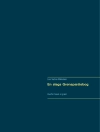Inhaltsverzeichnis
Invasive Arthropods and Approaches for Their Microbial Control.- Ecological Considerations.- Naturally Occurring Pathogens and Invasive Arthropods.- Population Ecology of Managing Insect Invasions.- Eradication.- Use of Pathogens for Eradication of Exotic Lepidopteran Pests in New Zealand.- North American Eradications of Asian and European Gypsy Moth.- Control.- Exotic Aphid Control with Pathogens.- Steinernema scapterisci as a Biological Control Agent of Scapteriscus Mole Crickets.- The Use of Oryctes Virus for Control of Rhinoceros Beetle in the Pacific Islands.- Use of Microbes for Control of Monochamus alternatus, Vector of the Invasive Pinewood Nematode.- Use of Entomopathogens against Invasive Wood Boring Beetles in North America.- Control of Gypsy Moth, Lymantria dispar, in North America since 1878.- Controlling the Pine-Killing Woodwasp, Sirex noctilio, with Nematodes.- Fire Ant Control with Entomopathogens in the USA.- Biological Control of the Cassava Green Mite in Africa with Brazilian Isolates of the Fungal Pathogen Neozygites tanajoae.- Microbial Control for Invasive Arthropod Pests of Honey Bees.- Safety and Public Issues.- Human Health Effects Resulting from Exposure to Bacillus thuringiensis Applied during Insect Control Programmes.- Environmental Impacts of Microbial Control Agents Used for Control of Invasive Pests.- Conclusions.- Considerations for the Practical Use of Pathogens for Control and Eradication of Arthropod Invasive Pests.












